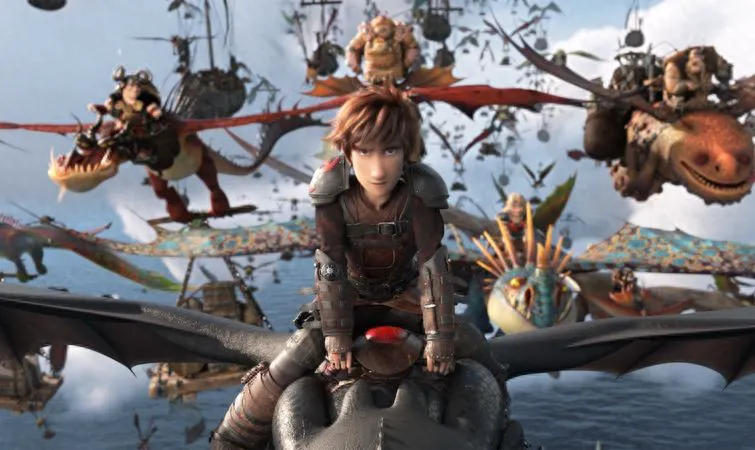After Universal Pictures acquired DreamWorks Animation three years ago, the studio underwent a series of adjustments.

How to Train Your Dragon: The Hidden World marked the end of a nine-year animated saga. Hiccup, the not-so-strong Viking, and Toothless, the Night Fury dragon, bid farewell to each other after growing up together in the first two films, each embarking on the next stage of their lives. The scene of Toothless flying into the sky towards the dragon utopia resonated with many viewers who had grown up with the series.
A Fitting Finale
It was a satisfying conclusion, not only for the characters in the film but also for DreamWorks Animation, the studio behind it. Founded in 1994, DreamWorks Animation was once a major animation studio capable of competing with Disney and Pixar. However, after 2013, a string of box office failures plunged DreamWorks into financial difficulties. In early 2016, DreamWorks was sold to Universal Pictures for $3.8 billion and has since been undergoing a lengthy period of adjustment.
Adjustments and Realignment
The adjustments were marked by the cancellation or postponement of several film projects. In late 2016, The Croods 2, which was progressing smoothly, was halted, and more than 30 staff members involved in the animation were reassigned to other projects. In early 2017, an original animation project called Larrikins was canceled due to NBC Universal’s insufficient cash flow. Even How to Train Your Dragon: The Hidden World was postponed from its original release date in 2018 to its current date.
According to Chris deFaria, who joined DreamWorks as president in January 2017, DreamWorks has spent the past two years streamlining its relationship with Universal Pictures. Previously, Universal Pictures had Illumination Entertainment, which produced the Despicable Me series. “What we want to avoid is telling the same stories as Illumination Entertainment or releasing them on the same date.” Coordinating the resources and relationships between the two different animation companies was a problem that deFaria needed to solve.
Diverging Strategies
Beyond these executive-level differences, the bigger divide between DreamWorks and Illumination Entertainment lies in the fact that they represent two completely different strategies for producing animated films in Hollywood.
DreamWorks adopts the traditional internal development and production model, employing a large number of animators and technology developers, which means that DreamWorks’ films typically cost more than $120 million. Illumination Entertainment is more flexible, completing the script internally and then hiring external companies to produce the animation, which keeps costs below $80 million. Considering the inherent risks in the film industry, the latter has a greater advantage in terms of operations.
DreamWorks once wavered between these two models. In June 2017, they released an animation called Captain Underpants: The First Epic Movie, outsourcing the work to a Canadian company, with a cost of only $38 million. After the film’s release, some analysts believed that this was a test run for DreamWorks, and if successful, they would switch to an outsourcing model to control film costs.
Financial Pressures and Strategic Shifts
Although DreamWorks does not seem to have ultimately chosen this model, there are signs that they have also experienced some financial pressure. The production cost of How to Train Your Dragon: The Hidden World was $129 million, far lower than the $165 million and $145 million of the previous two films. Considering inflation, the difference in production costs would be even more significant.
With the release of How to Train Your Dragon: The Hidden World, DreamWorks’ strategy seems to be becoming clearer. Judging from the subsequent film list, DreamWorks seems to be preparing to focus on sequel films while relatively controlling costs.
In addition to Abominable, which was previously co-produced with Oriental DreamWorks, The Croods 2, The Boss Baby 2, and Trolls World Tour have all been scheduled for release, and Shrek and Puss in Boots have also announced reboot plans. These films will be released successively at a rate of one to two films per year.
In this sense, DreamWorks Animation seems to be on the right track. The box office performance of How to Train Your Dragon: The Hidden World also seems to have given DreamWorks a sigh of relief. The film’s opening weekend box office of $55 million in North America exceeded the performance of the previous two films. Its cumulative box office in China is expected to reach 500 million yuan, exceeding the 400 million yuan of the previous film released in 2014.